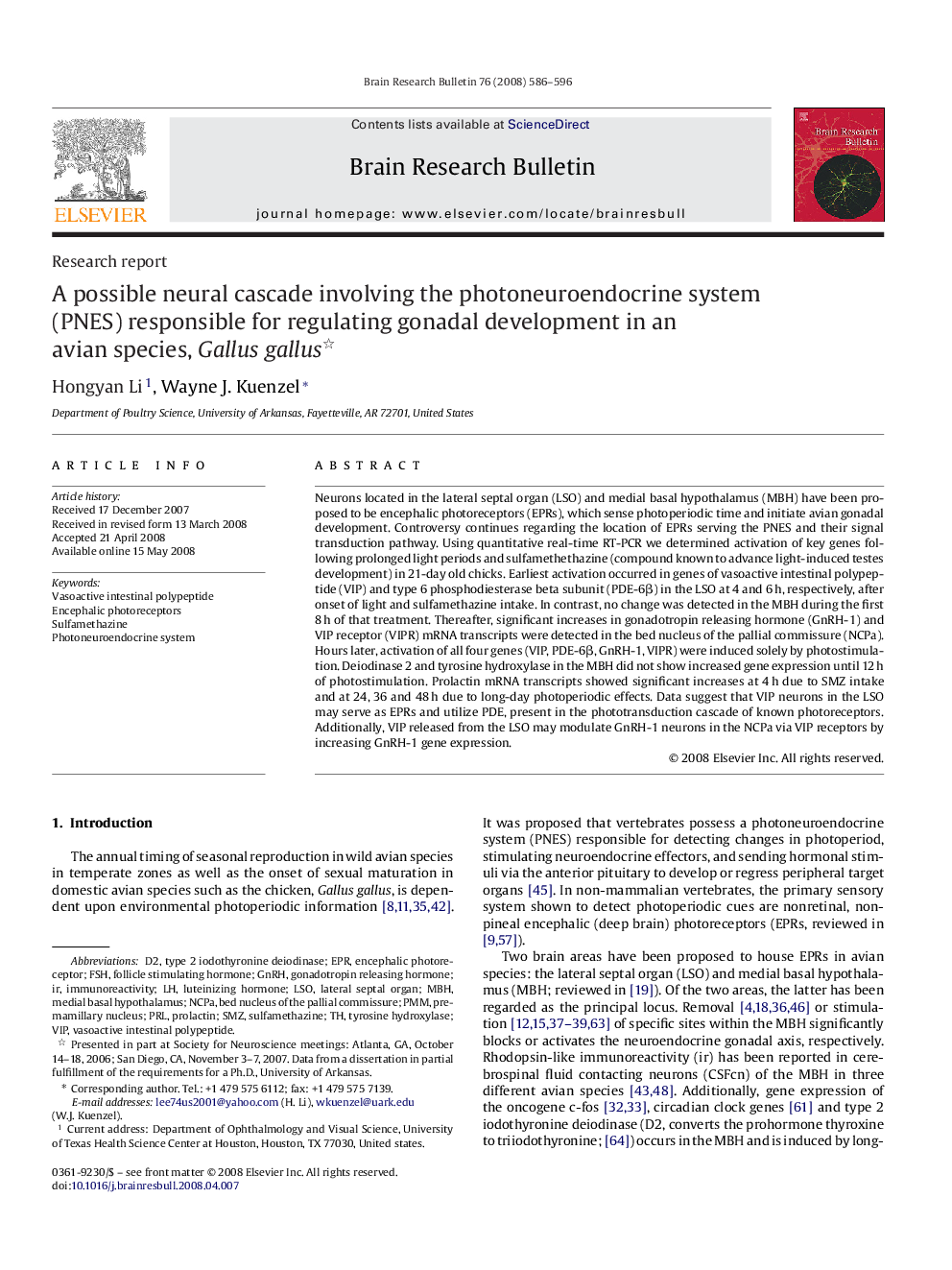| Article ID | Journal | Published Year | Pages | File Type |
|---|---|---|---|---|
| 4319637 | Brain Research Bulletin | 2008 | 11 Pages |
Neurons located in the lateral septal organ (LSO) and medial basal hypothalamus (MBH) have been proposed to be encephalic photoreceptors (EPRs), which sense photoperiodic time and initiate avian gonadal development. Controversy continues regarding the location of EPRs serving the PNES and their signal transduction pathway. Using quantitative real-time RT-PCR we determined activation of key genes following prolonged light periods and sulfamethethazine (compound known to advance light-induced testes development) in 21-day old chicks. Earliest activation occurred in genes of vasoactive intestinal polypeptide (VIP) and type 6 phosphodiesterase beta subunit (PDE-6β) in the LSO at 4 and 6 h, respectively, after onset of light and sulfamethazine intake. In contrast, no change was detected in the MBH during the first 8 h of that treatment. Thereafter, significant increases in gonadotropin releasing hormone (GnRH-1) and VIP receptor (VIPR) mRNA transcripts were detected in the bed nucleus of the pallial commissure (NCPa). Hours later, activation of all four genes (VIP, PDE-6β, GnRH-1, VIPR) were induced solely by photostimulation. Deiodinase 2 and tyrosine hydroxylase in the MBH did not show increased gene expression until 12 h of photostimulation. Prolactin mRNA transcripts showed significant increases at 4 h due to SMZ intake and at 24, 36 and 48 h due to long-day photoperiodic effects. Data suggest that VIP neurons in the LSO may serve as EPRs and utilize PDE, present in the phototransduction cascade of known photoreceptors. Additionally, VIP released from the LSO may modulate GnRH-1 neurons in the NCPa via VIP receptors by increasing GnRH-1 gene expression.
